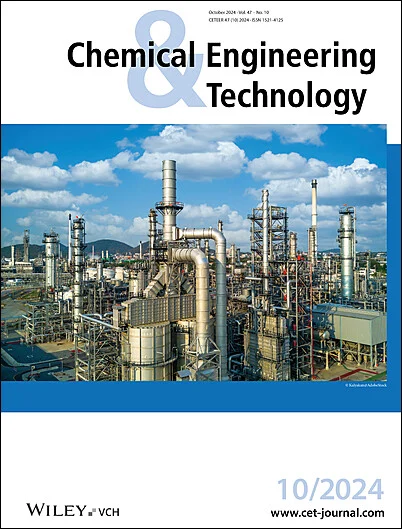Phenolic Compound Removal from Olive Mill Wastewater by Sulfate Radical SR/AOP: RSM-CCD Optimization
IF 1.8
4区 工程技术
Q3 ENGINEERING, CHEMICAL
引用次数: 0
Abstract
Olive mill wastewater (OMW) is rich in organic pollutants, particularly phenolic compounds (PC). Persulfate (PS)-based advanced oxidation processes have emerged as effective treatment methods. This study focused on optimizing PC removal using a catalytic Fenton-like process. A Plackett–Burman design was applied to screen key variables: PS and copper concentrations, reaction time, temperature, and initial pH. A central composite design with response surface methodology was then used to refine the process. The resulting second-order polynomial model showed excellent fit with experimental data. Under optimal conditions, a maximum PC removal efficiency of 62.09 % was achieved.
硫酸根SR/AOP法去除橄榄厂废水中的酚类化合物:RSM-CCD优化
橄榄厂废水中含有丰富的有机污染物,尤其是酚类化合物。过硫酸盐(PS)为基础的高级氧化工艺已成为一种有效的处理方法。本研究的重点是优化使用催化芬顿法去除PC。采用Plackett-Burman设计筛选关键变量:PS和铜浓度、反应时间、温度和初始ph。然后采用响应面法的中心复合设计来改进工艺。所得二阶多项式模型与实验数据拟合良好。在此条件下,PC的去除率最高可达62.09%。
本文章由计算机程序翻译,如有差异,请以英文原文为准。
求助全文
约1分钟内获得全文
求助全文
来源期刊

Chemical Engineering & Technology
工程技术-工程:化工
CiteScore
3.80
自引率
4.80%
发文量
315
审稿时长
5.5 months
期刊介绍:
This is the journal for chemical engineers looking for first-hand information in all areas of chemical and process engineering.
Chemical Engineering & Technology is:
Competent with contributions written and refereed by outstanding professionals from around the world.
Essential because it is an international forum for the exchange of ideas and experiences.
Topical because its articles treat the very latest developments in the field.
 求助内容:
求助内容: 应助结果提醒方式:
应助结果提醒方式:


